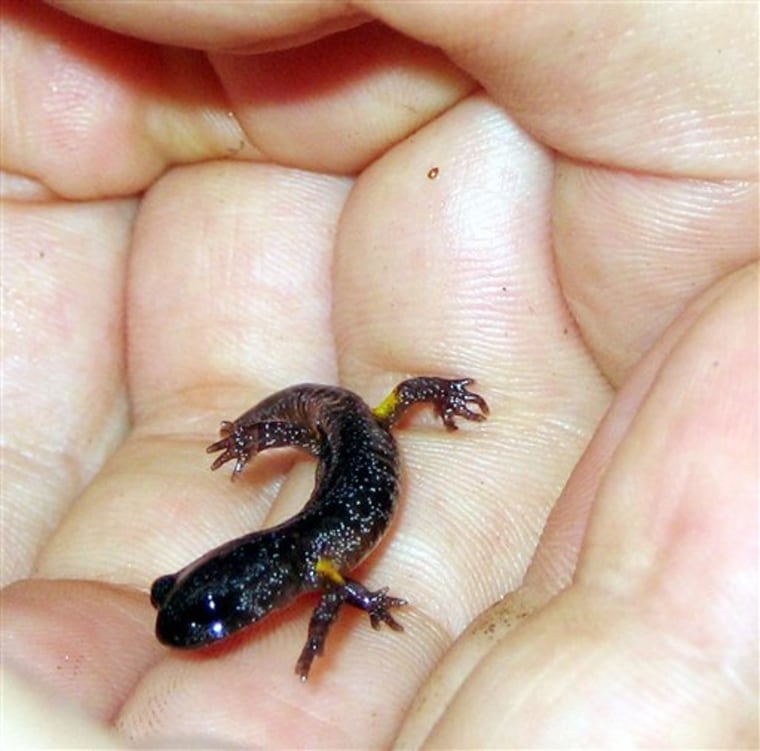Two rare salamanders that live in rocky patches within old growth forests along the Klamath River in California and Oregon don't need Endangered Species Act protection because existing state and federal protections are adequate to maintain their habitat, the U.S. Fish and Wildlife Service said Tuesday.
But environmentalists who sought listings for the Siskiyou Mountains salamander and Scotts Bar salamander said they would challenge the decision in court. They said moves are under way to remove the protections cited by Fish and Wildlife, and the agency itself is embarking on a study to see just how much harm logging does to the salamanders' habitat.
The Fish and Wildlife field office in Yreka, Calif., concluded that threats to salamander habitat from logging had dramatically declined, and that salamanders have even been found in clear-cut forests.
Existing protections cited
The service said the Siskiyou Mountain salamander is listed as threatened by the state of California, and a Northwest Forest Plan provision that protects habitat for certain rare species on national forests in Northern California, Oregon and Washington, was reinstated earlier this year. Both salamanders are covered by the provision.
The two salamanders live under the surface in patches of loose rock where old growth forest keeps the air and ground cool and moist.
They were once considered the same species, but were recognized by scientists as separate in recent years. Siskiyou Mountain salamanders are found in some 200 sites along the Klamath River in Northern California and the upper reaches of the Applegate River in Oregon. The Scotts Bar salamander is known to inhabit only 27 sites around Scotts Bar on the Klamath River.
Activists’ fears
The Center for Biological Diversity petitioned in 2004 for Endangered Species Act protection for the two salamanders. The petition cited logging, global warming and inadequate federal protection. The center sued to get the Fish and Wildlife Service to make a preliminary finding on listing them as threatened or endangered.
Center biologist Noah Greenwald said the California Department of Fish and Game is considering eliminating the threatened species listing for the Siskiyou salamander, and a timber company is planning to log some timber sales that include Scotts Bar salamander sites on the Klamath National Forest. Moreover, he said, the Forest Service has embarked on a process to eliminate the Survey and Manage provisions of the Northwest Forest Plan.
"This denial comes from an administration that's provided protection to the fewest number of wildlife species of any administration since the Endangered Species Act was passed," Greenwald said. "We're going to sue."
